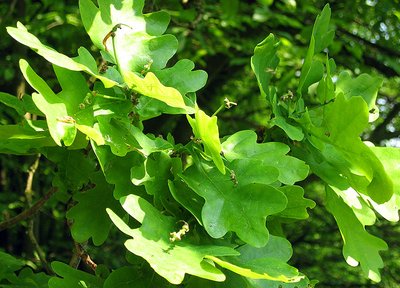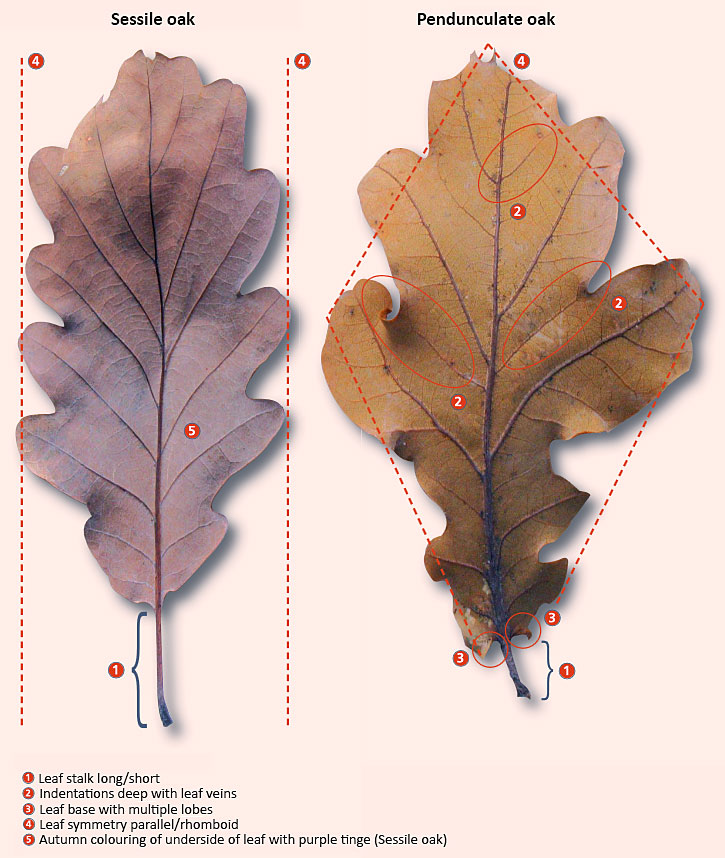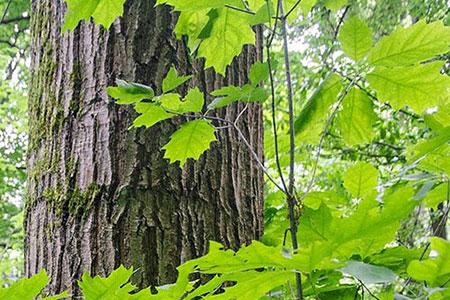Sessile and pedunculate oaks have very different site requirements. This is of great significance for forestry practice particularly in times of climate change and in the light of the damage caused by insects and fungi in the past decades.
Requirements of the oak species
The sessile oak’s main range is in lower elevation mountain areas. The pedunculate oak is a tree of the alluvial plains. The two oak species differ particularly in their water supply requirements. Generally, the pedunculate oak needs more moisture and more nutrients. The sessile oak prefers warmer locations. In dry hilly areas, the sessile oak occurs in association with the common hornbeam, the small-leaved lime and the common beech. The pedunculate oak occurs in the moist and nutrient-rich soils of the lowlands along with common ash, maple and wild cherry. On the Fränkische Platte (“Franconian plateau”) in northern Bavaria, late-flushing pedunculate oaks in valley areas have displayed particularly severe signs of crown damage and dying branches in the last few years.
Differentiation on the basis of macroscopic leaf characteristics
The two species can be told apart very reliably on the basis of their macroscopically discernible leaf characteristics - and at almost all times of year and without seeing the fruit. This is possible because, even outside the vegetation period or in the case of old trees whose fresh leaves are out of reach, the characteristics are easily recognisable in the fallen leaves. Undecayed, dry fallen leaves from the previous year often retain their easily recognisable structures throughout and beyond the summer.
Characteristic | Sessile oak | Common or pedunculate oak |
Length of the leaf stalk | Long | Short |
Indentations and leaf veins | Indentations not so deep, no leaf veins in the indentations | Indentations deep, leaf veins run to the indentations |
Leaf base | Few lobes | Multiple lobes |
Leaf symmetry | Parallel | Offset (rhomboid) |
Autumn colouring of underside of leaf | With purple tinge (“cocoa-coloured”) | Without purple tinge |
The characteristics “length of leaf stalk” and “indentations and leaf veins” are very reliable. Using a microscope, the tiny hairs along the central rib on the underside of the leaf in sessile oaks are also a reliable characteristic, but one that is very difficult to discern even with a magnifying glass. The sessile oak also has flat-lying, stellate (star-like) hairs over the entire underside of its leaves. The purple tinge on the underside particularly of recently fallen sessile oak leaves is easily recognisable even from several metres away. The lobes of the leaf base and the leaf symmetry are additional identifying features, although not always reliable.
Several leaves should always be examined for all of the mentioned characteristics. The assessment of all of the established leaf characteristics together permits rapid identification of the tree in most cases.



